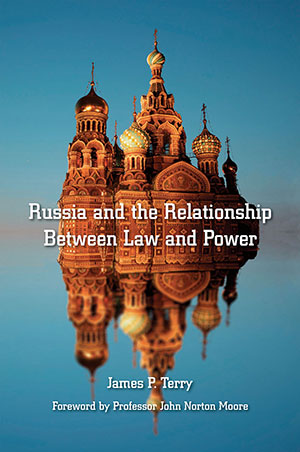Журнальный клуб Интелрос » Joint Force Quarterly » №77, 2015

Winston Churchill stated, “Russia is a riddle wrapped in a mystery inside an enigma.” James Terry patiently peels away each of those layers to hypothesize an unrelenting consistency and prevailing logic to Russian behavior as it seeks power, for myriad reasons, over those who dwell within and without its self-defined boundaries. The release of this compact yet intricate work by Dr. Terry, addressing the long and convoluted history of Russia and its recurrent international “habits,” could not be timelier in multiple contexts.
The timeframe is inclusive of the post-Yalta Soviet Union through 2008, with cogent collateral references to subsequent behaviors. There is a thorough analysis of the Russian vocalized rationalizations versus actions (legal and otherwise) vis-à-vis Afghanistan (which remains in a class by itself), as well as Hungary, Czechoslovakia, Poland, Lithuania, Chechnya, and Georgia. Terry’s salient analyses are primarily twofold: first, directed to the Russian forward propulsion of military, economic, political, and cultural decisions through creative interpretation of one or more provisions of already existing legal documents ranging from Geneva Conventions to the United Nations Charter to the Warsaw Pact; and second, in those instances where the reasons proffered for Russian actions were defined in the context of reinvented so-called inherent national interests as the result of its citizens in that territory.
For instance, in discussing the 2008 Russian dealings with the government of Georgia, Terry identifies the prophetically strong message, now heard in its greatest cacophony in Ukraine, that those areas with significant Russian populations “would be viewed as squarely within Moscow’s sphere of influence, and be protected.” He further observes that the current events in locations such as Ukraine and perhaps elsewhere were and are probably inevitable given the ongoing and expanding Russian “leasing” and/or other control of ports including Sevastopol, part of the ever-expanding spectrum of exigencies that offer inexorable opportunities to further exercise and perfect a decidedly idiosyncratic reading of the international rights to self-defense.
Although all segments of the book are valuable in delineating the Russian machinations and explanations often after the fact with their purported supporting legalities, Terry has done an equally articulate job in his longest and shortest chapters discussing the situations in Czechoslovakia in 1968 and Lithuania in 1990, respectively.
In the former instance, having obvious problems with but not altering its basic premises from the earlier Hungarian intervention episode, Russian justifications for its behavior in Czechoslovakia would eventually run a legal gamut, none with permanent potent efficacy. Terry’s detailed explanation of how that evolved both factually and legally illuminates not only the specifics but also the nature of the Russian thought process.
As for the discussion relating to Lithuania, Terry notes that as one of the 14 Soviet Republics and autonomous regions to make the claim of independence from Moscow under “perestroika” in March 1990, the Baltic states most clearly met the criteria for self-determination established by international law affirmed by many including the then–Soviet Union, but that did not deter repeated threats and actions to the contrary. The decades-long struggle of Lithuania, although unique, illustrates a conundrum in international law, the weighing of protections for states versus peoples, and not exclusively in the realm of human rights.
In finite examples, Dr. Terry has demonstrated that Russia may now call itself a democracy, but unlike a rose which by any other name may smell as sweet, an oligarchy by any other name does not expand a leadership to more than merely a few. The individual country “crises” described herein are not all inclusive, of course, but as Terry sums up, provide a realistic guide for assessing the overall Russian approach to international legal commitments.
It is easy to concur with the foreword by eminent scholar John Norton Moore that “this is not a quick survey of Soviet/Russian uses of force, but rather an extraordinarily deep presentation and analysis of each. This important book also has crucial insights into the future of United States/Russian foreign relations. It is a must-read for those focused on international relations.” JFQ